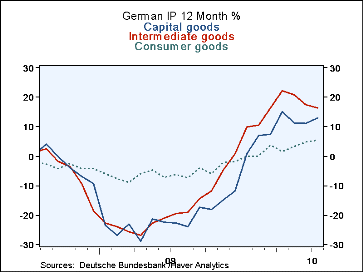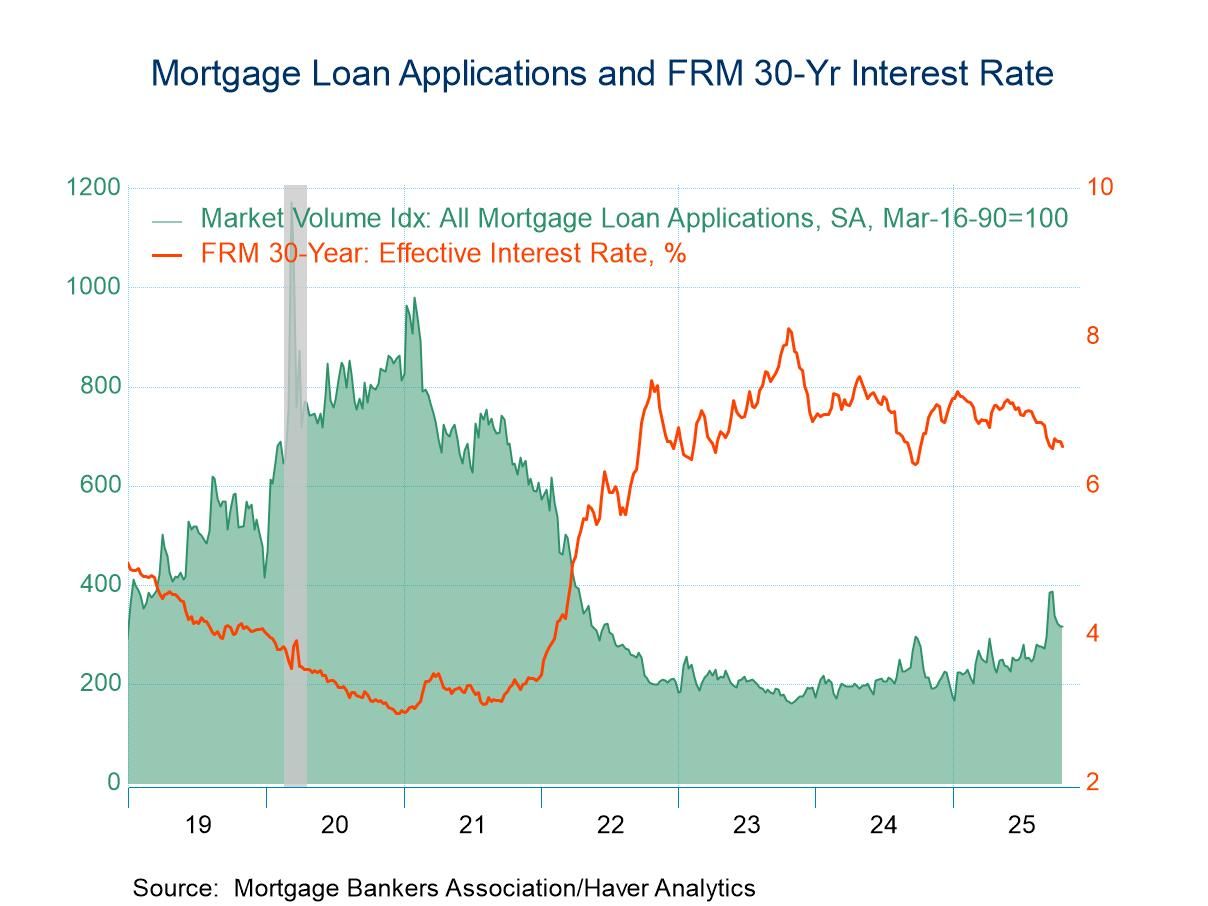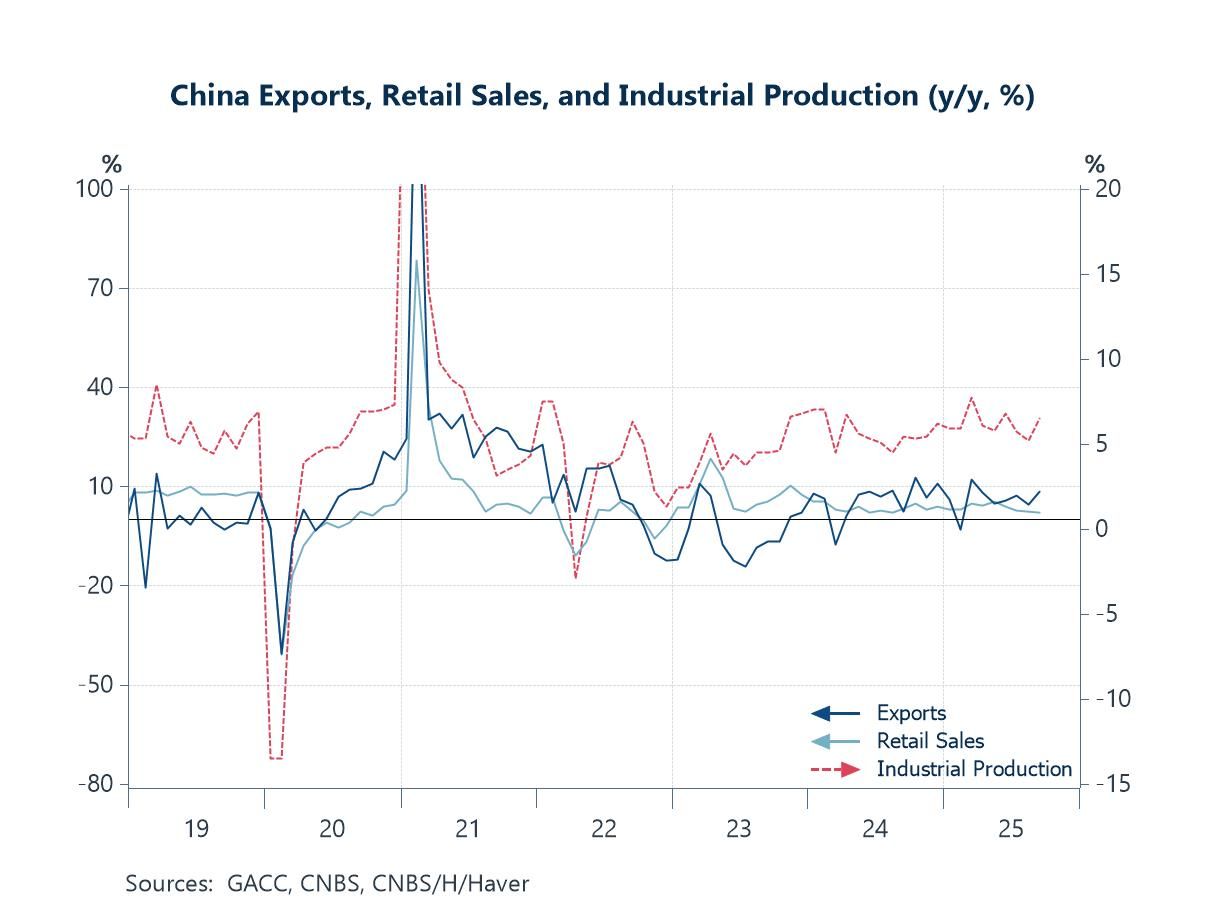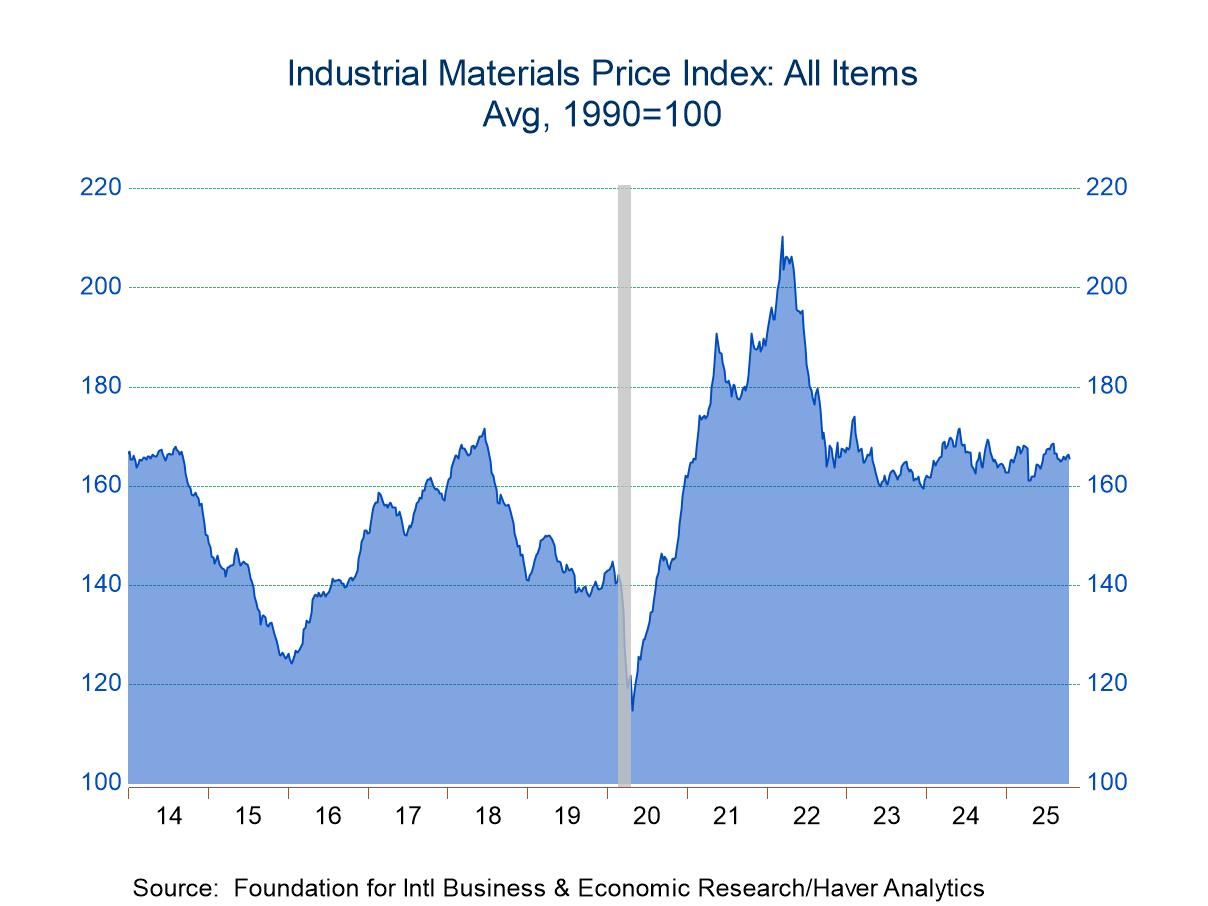 Global| Sep 08 2010
Global| Sep 08 2010German IP Slows Down...
Summary
IP makes lethargic rebound - German IP is up in July after a drop of 0.6% in June. That means IP is lower on balance over two months. July was not much of a 'bounce.' The weakness in IP corresponds with the drop in orders whose [...]
 IP makes lethargic rebound - German IP is up in July after a drop of 0.6% in June.
That means IP is lower on balance over two months. July was not much of a 'bounce.'
The weakness in IP corresponds with the drop in orders whose weakness showed up in July
with a 2.2% drop. After a series of stronger than expected numbers Germany is beginning
to post some figures suggesting that growth is becoming more challenged. That was inevitable
for an economy trying to make its way on export led growth in a global environment of
weak demand. Germany has yet to get its domestic demand in gear.
IP makes lethargic rebound - German IP is up in July after a drop of 0.6% in June.
That means IP is lower on balance over two months. July was not much of a 'bounce.'
The weakness in IP corresponds with the drop in orders whose weakness showed up in July
with a 2.2% drop. After a series of stronger than expected numbers Germany is beginning
to post some figures suggesting that growth is becoming more challenged. That was inevitable
for an economy trying to make its way on export led growth in a global environment of
weak demand. Germany has yet to get its domestic demand in gear.
Sector trends - Sector trends show that capital goods trends are erratic but even three-month rates of growth are still strong. However, the fresh monthly data offer a different story of encroaching weakness on capital goods. Intermediate goods output has slowed from its earlier pace but is still growing. Consumer goods output is the one series that can make a claim for getting stronger as its three month growth rate exceeds both its six month rate and its 12-month rates and its recent monthly output numbers show consistent gains. Since this has been the weak sector maybe Germany is also in the process of some transition. It's too soon to tell about that.
MFG has momentum and bumps in the road - Manufacturing output is down for two months running but its three month growth rate is still solidly strong above 10%. While that may seem reassuring the recent monthly results have been below par and we still see that the orders series that is pointing to a slowdown.
Beep Beep! There is no unambiguous trend for Germany. It has posted strong numbers. It has been an island of strength in the midst of a growth-challenged Euro-Area and it did that on export-led growth. But now it is sputtering. In many ways Germany has looked like Wile E. Coyote of the Road Runner cartoons. Wile E is prone to stopping and skidding off the end of a high mesa but he defies gravity for a while, he does not fall until he looks down. Has Germany looked down recently?
| Total German IP | |||||||
|---|---|---|---|---|---|---|---|
| Saar Except M/M | Jul-10 | Jun-10 | May-10 | 3Mo | 6Mo | 12Mo | Quarter- to-Date |
| IP total | 0.1% | -0.6% | 2.8% | 9.8% | 14.9% | 11.3% | 3.9% |
| Consumer | 0.5% | 0.1% | 1.8% | 10.0% | 3.0% | 5.4% | 7.1% |
| Capital | -0.7% | -0.3% | 4.1% | 13.1% | 17.0% | 13.0% | 2.8% |
| Intermed | 0.4% | -0.4% | 2.6% | 11.0% | 20.7% | 16.4% | 6.1% |
| Memo | |||||||
| Construction | 0.9% | -0.8% | -1.8% | -6.7% | 54.6% | 5.9% | -1.6% |
| MFG IP | -0.1% | -0.2% | 3.1% | 11.9% | 15.8% | 12.7% | 4.9% |
| MFG Orders | -2.2% | 3.6% | 0.0 | 4.6% | 19.8% | 17.6% | 0.4% |
Robert Brusca
AuthorMore in Author Profile »Robert A. Brusca is Chief Economist of Fact and Opinion Economics, a consulting firm he founded in Manhattan. He has been an economist on Wall Street for over 25 years. He has visited central banking and large institutional clients in over 30 countries in his career as an economist. Mr. Brusca was a Divisional Research Chief at the Federal Reserve Bank of NY (Chief of the International Financial markets Division), a Fed Watcher at Irving Trust and Chief Economist at Nikko Securities International. He is widely quoted and appears in various media. Mr. Brusca holds an MA and Ph.D. in economics from Michigan State University and a BA in Economics from the University of Michigan. His research pursues his strong interests in non aligned policy economics as well as international economics. FAO Economics’ research targets investors to assist them in making better investment decisions in stocks, bonds and in a variety of international assets. The company does not manage money and has no conflicts in giving economic advice.






